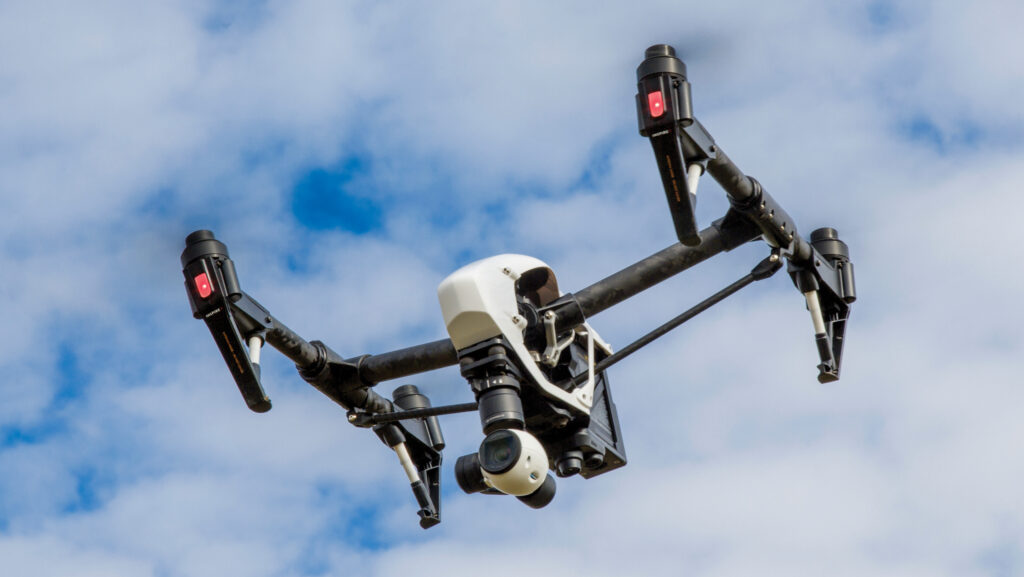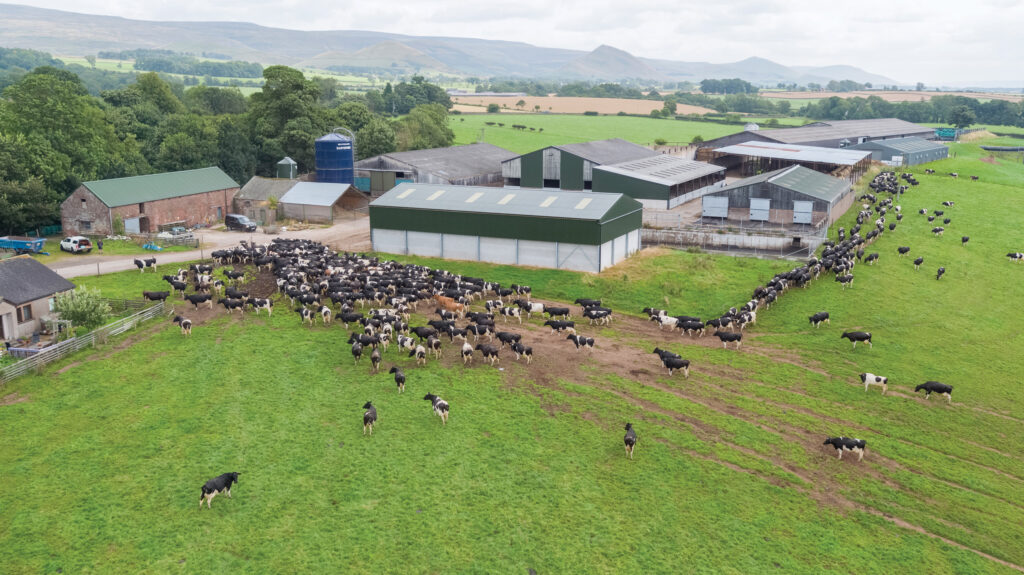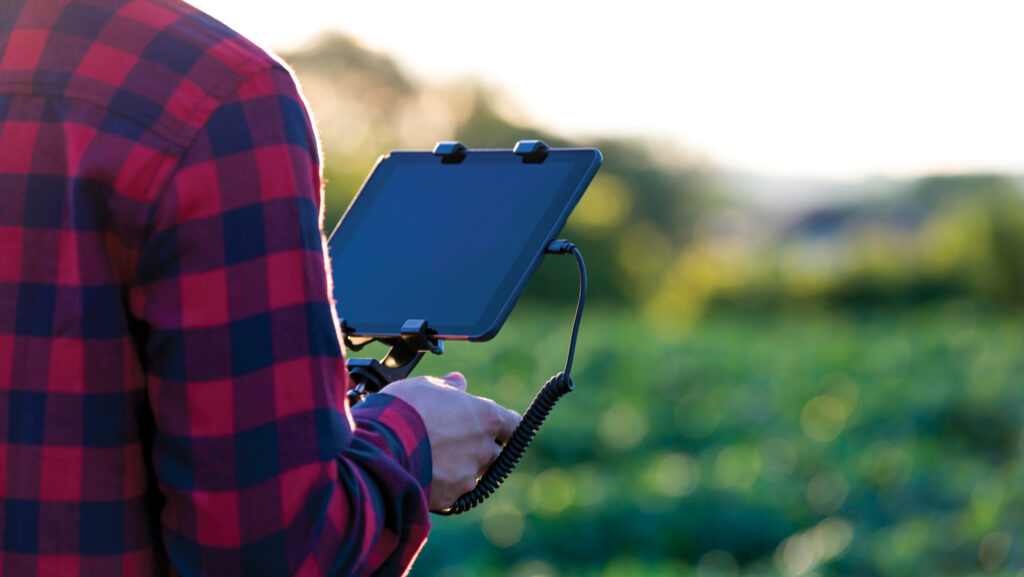Drone rules and how to deal with problem flying over farms
 © GNP
© GNP Drones with built-in cameras threaten not just privacy on farms and rural estates, but security as well.
In the wrong hands they could be used to gather footage of high-value items to target for stealing.
The majority of drone users don’t deliberately set out to cause a problem as, for them, a drone is just a toy used for an innocent hobby.
However, farmers are increasingly concerned that thieves, activists and others might take advantage of the bird’s-eye view these devices provide of their property and land.
There is also the matter of drones invading privacy or disturbing livestock.
See also: Autonomous drone spraying poised to become a reality
Drone technology is now cheaper and more easily available, so it presents greater challenges on several fronts.
We look at what rights landowners, occupiers and tenants have to stop people from flying drones over their property and how they can be enforced.
Control of airspace above farms
While farmers own the land itself or, in the case of tenants, are its legal occupiers, their rights to control the airspace above it are limited. Nonetheless, they do have rights.
UK airspace is regulated by the Civil Aviation Authority (CAA). The CAA’s Drone and Model Aircraft Code states that a drone or model aircraft must never be flown higher than 120m from the closest point of the Earth’s surface.
The code also states that a drone must not be flown closer than 50m to people.
This includes people in buildings and transport such as cars, lorries, trains and boats.
A minimum horizontal distance of 50m must be kept between a drone or model aircraft and people.
This creates a no-fly zone around people that goes all the way up to the legal height limit (120m).
Drones weighing more than 250g cannot be flown over people in this no-fly zone, even if they are flown higher than 50m.
In effect, drones heavier than 250g cannot be flown over property without permission of the land holder.

© GNP
All drones at 250g or heavier need both operator and flyer identification (ID) with the operator ID visible on the device.
They must also keep a minimum of 150m away from residential, recreational, commercial and industrial sites.
Responsibilities of drone pilots
- Anyone who flies or owns a drone is responsible for making sure all flights are safe and legal, and that also applies to farmers who use them for crop monitoring, checking livestock and other husbandry
- The Drone and Model Aircraft Code dictates that a drone must be kept in direct sight of the person flying it
- An observer must be present if a drone is fitted with a camera providing live video to devices such as smartphones, but that observer doesn’t need flyer ID if they are standing next to the flyer
- Flying must not take place where it will disturb or endanger animals and wildlife – activity may be restricted at sites of special scientific interest
- Don’t fly if the weather conditions could affect how the drone operates
- It is sensible to have the appropriate insurance
Different rules for small drones
The rules are different for drones and model aircraft weighing less than 250g.
These can fly closer to people than 50m and can be flown over people as long as this does not endanger the individuals, but they still must not be flown over crowds.
The 150m distance rule for residential, recreational, commercial and industrial sites also does not apply to sub-250g drones.
A sub-250g drone with a camera needs an operator ID but not necessarily a flyer ID, although this is recommended by the code.
The operator ID must be displayed on the drone and is only available to those aged 18 or older.
The operator of a drone is responsible for its maintenance and for ensuring that anyone flying it does so responsibly.
Drones weighing less than 250g with no camera don’t require an operator ID.
Drones and model aircraft weighing 250-500g
Drones or model aircraft between 250g and 500g can fly closer to people than 50m if the flyer has an A2 Certificate of Competency.
However, these must still not intentionally be flown over people.
When a drone crash-lands or makes a forced landing on private property, the property owner’s permission must be obtained before the drone is retrieved.
“Landowners should consider instructing an expert in cases of problematic drone use to establish the height of the drone activity, if it changes, how often it is flown at certain heights,” says William Johnson, a property disputes lawyer at Farrer & Co.
“Doing so could be key in putting them on the front foot in arguing that drone use is unreasonable.”
Farmers’ rights relating to drone activity
Although it can be tricky for farmers to control unwanted drone activity, it is not impossible.
Harassment and nuisance laws could potentially be applied when there is recurring and unwelcome drone activity that causes distress or prevents the landowner from enjoying their property, says Will.
“Enforcing these laws and the law of trespass in the context of drone flight is a complex and a developing area of law,” he says.
General Data Protection Regulation (GDPR) rules could also apply if they are breached by the publishing of photos or recordings captured by the drone – for example, on social media sites.
If drone incidents are suspicious or distressing, they can in the first instance be reported to the police.
If the intrusion is persistent, there is technology that can help track drones, but this comes at a hefty cost.
Some landowners have successfully applied to the courts for an injunction to stop drone activity, but this is an expensive route.

© Adobe Stock
A letter from a solicitor to the drone operator, if they are known to the farmer, warning of potential legal action will cost considerably less than court proceedings and could act as a sufficient deterrent, says Will.
If a landowner or farmer is concerned about drone flights over their property, they should seek legal advice, he recommends.
“Cases in this new area of law are very fact-specific and often engage a wide range of laws – there is no ‘one size fits all’ approach,” he points out.
Enforcing rights under the correct laws is key, Will adds.
For example, the judge in recent legal proceedings concerning unwanted drone flights remarked that the landowner was seeking a remedy under trespass but that remedy was really only available under privacy-based laws.
Having a record of activity is important and may help if legal action is required, says Will.
Keep a record of activity before considering legal action
- Keep a log of what drones are doing, when it is happening and how often – is it consistent, is it happening late at night, for example?
- Note whether there is a camera attached to the drone
- Check if any of photographs or video captured by a camera are being shared online
- Is the drone activity coinciding with spates of trespass, theft or disturbance of livestock?
Drone use leads to injunction
There are few legal precedents involving drones, but Will points to one case in 2023, where the claimant, Anglo International Upholland, owned a 129ha property, which included a dilapidated seminary.
The defendants, Mr Wainwright and persons unknown, used drones to take photographs of the seminary and posted these on social media, which encouraged trespass.
The claimant sought an injunction to prevent Mr Wainwright and persons unknown from flying drones over the site and also entering it.
The judge concluded that the use the drone was being put to during the flight was a problem.
“Flying the drone at a height from which photographs and videos could be taken, which were then used to facilitate and encourage further trespasses, was significant in this case,” says Will.
“The court granted an interim injunction against Mr Wainwright and the persons unknown, preventing them from entering the site and banning drone flights over it for two years.”
There are two types of ID relating to drones and model aircraft:
- A flyer ID, for which a basic safety test must be passed
- An operator ID, for the person responsible for the drone and who they allow to fly it. The operator ID must be displayed on the drone.
Flying weight requirements |
||
|
Type of drone or model aircraft |
ID needed |
|
|
|
Flyer ID |
Operator ID |
|
Below 250g/toy |
No |
No |
|
Below 250g/not a toy/no camera |
No |
No |
|
Below 250g/not a toy/with camera |
No |
Yes |
|
250g or heavier |
Yes |
Yes |
|
Source: CAA Drone and Model Aircraft Code |
||
